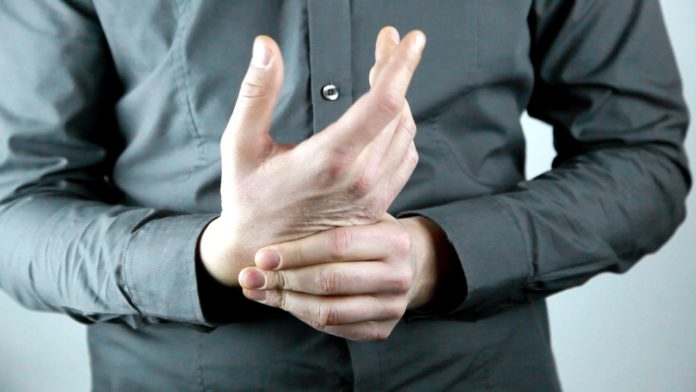Complex regional pain syndrome, or CRPS for short, is one of the more common and less talked about forms of prolonged pain that can complicate your recovery following an injury. CRPS has both acute, or short-term, and chronic, or long-term, forms. If you have cycles of spontaneous or excess pain that is far greater than usual following an injury to an arm or leg, you may have a form of CRPS. But, fortunately, there is hope.
According to Dr. Katinka van der Merwe, CRPS can go into remission over time with proper treatment, by actually getting to the root of what is causing the pain and restoring balance to the nervous system instead of just numbing the pain with a bandaid approach. Here is everything you need to know about complex regional pain syndrome.
Cause and Symptoms of CRPS
The most common form of CRPS is a form of nerve damage, where your peripheral nerve fibers fire excessively and carry pain messages to the brain despite no other injury being present. This means that the primary symptom is spontaneous pain that can be either constant or can fluctuate with activity to the affected limb or increased sensitivity in the affected area that is out of proportion to the amount of contact present. Because the excess nerve firing causes your body to believe that it is injured, there may also be swelling and changes in skin color to the affected limb as your body attempts to fix the nonexistent damage. Severe cases of CRPS may also involve impairment to your muscle strength and movement or unexpected “jerking” motions in the affected limb or limbs.
Diagnosing CRPS
Since there are many ways and forms in which CRPS can surface, there is no one test that can diagnose CRPS. Diagnosing CRPS must involve a detailed examination by a neurologist or other medical professional who specializes in brain activity and nerve damage. Some forms of CRPS can be detected through ultrasound or MRI tests, since these tests can reveal the underlying nerve damage that causes CRPS. There are also nerve conduction tests that can detect and isolate the underlying nerve damage as well. Still, detecting and diagnosing CRPS can be a lengthy and frustrating process, especially since those with CRPS are often in a great deal of pain almost daily.
Treating CRPS
The good news is that, as long as CRPS is detected early, most cases can recover with minimal treatment. Physical therapy is the most common form of treatment, since keeping the affected limb moving to ensure good blood flow is essential. Physical therapy also ensures that the limb won’t degenerate due to disuse from the ongoing pain and can reverse brain changes associated with chronic pain.
Many patients also require therapy and even medication for the psychological symptoms of severe chronic pain associated with more severe forms of CRPS. Many psychological problems that can arise from severe CRPS, such as depression and anxiety, can heighten pain perception, reduce the desire to seek and complete medical care and physical therapy, and even change brain function in ways that can increase the severity of CRPS. If you are struggling with your mental health due to CRPS, a therapist or psychologist is a must.
There are also several types of medication that can be prescribed or recommended to take the edge off CRPS and improve physical therapy results. Anti-inflammatory pain medication such as aspirin or ibuprofen can reduce swelling caused by some forms of CRPS and take the edge off the pain on severe days. Some drugs developed for other neurological pain conditions, such as duloxetine and nortriptyline, are often prescribed to patients with CRPS since these conditions affect the brain in similar ways. Additionally, some holistic treatments, including CBD oil, acupuncture, and the use of medical marijuana, have been shown to improve CRPS symptoms in some patients. Keep in mind that certain states, like New York, require you to obtain a medical marijuana card prior to the use of cannabis products for medical purposes. A full review of your state requirements is recommended to ensure you have the appropriate documentation to utilize certain treatments.
In severe, chronic cases of CRPS, neurostimulation treatments near injured nerves, within brain pain centers, or within the spinal column can be used to change the electrical signaling in the brain, though these treatments require repetition to be effective and can be quite invasive and so are only used in the most severe of cases.


